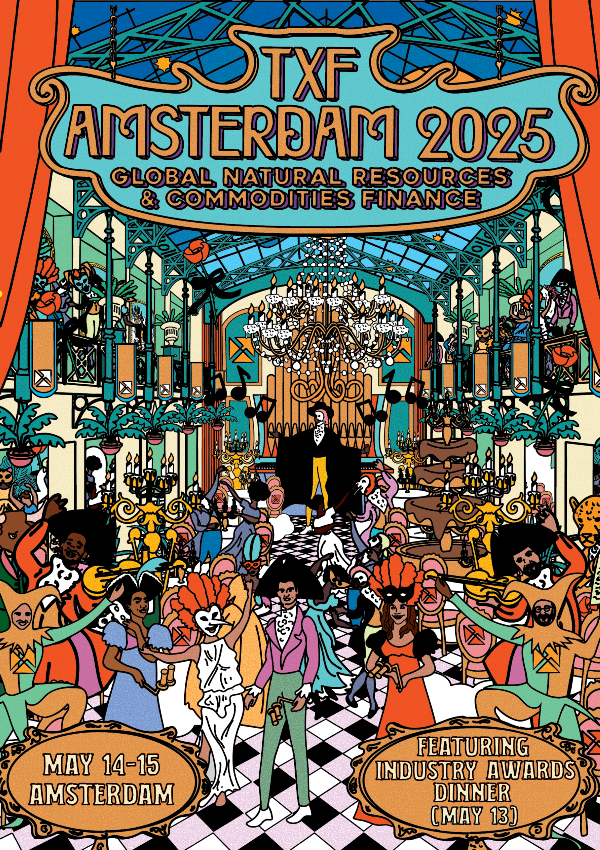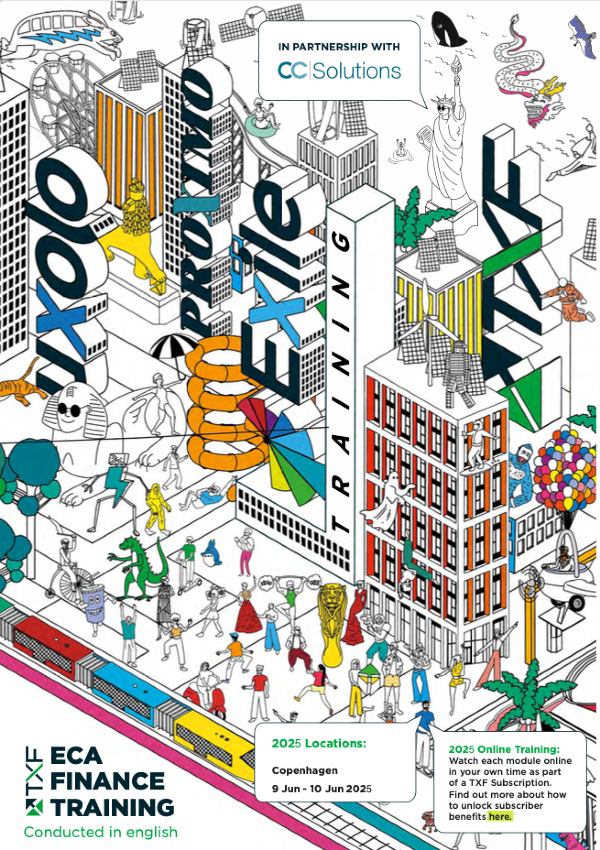2016: The tipping point
The 2015 Berne Union statistics for the trade credit insurance market shows an interesting trend over 2014 and perhaps one worthy of note to us all. The numbers suggest that our industry has reached an inflection point during 2015 where claims have reached their highest level since the global financial crisis and total premiums have declined for the first time in some years.

The 2015 Berne Union statistics for the trade credit insurance market shows an interesting trend over 2014 and perhaps one worthy of note to us all. The numbers suggest that our industry has reached an inflection point during 2015 where claims have reached their highest level since the global financial crisis and total premiums have declined for the first time in some years. This backdrop is prevalent at a time where capacity continues to enter the market according to the Arthur J Gallagher Market Report which shows that the available market capacity in Trade Risks terms grew by some 3% over six months to July 2016.
These latest statistics reflect an increasingly complex market for credit insurers where the traditional tools for dampening losses are measured against new entrants keen to grow portfolios. This picture continues into late 2016 and in a persisting low investment yield environment it is set to stay this way moving into 2017. The cocktail of outcomes will pose challenges for insurers but also some significant opportunities.
Risk is risk...
Loss activity is at its highest level since 2008, reflecting the unsettled and uncertain geopolitical environment. The list of events that has led us to where we are is endless and truly global in its reach. Political events in Brazil have exacerbated economic pressures and vice versa. The Middle East and North Africa continues to dominate the headlines where the rise of ISIS, the threat of terrorism, mass migration and complicated social and political allegiances put problem-solving on the difficult to impossible scale of plausibility.
.png) The frozen issue that is Ukraine and Russia lingers. Turkey is clearly undergoing fundamental restructuring in social and political terms that will clearly resonate into the economy. The doubts over the Chinese economy persist and that feeds its nervousness into an already affected commodity market. The South China Sea territorial disputes rumble onwards and North Korea seems intent on developing its nuclear capability.
The frozen issue that is Ukraine and Russia lingers. Turkey is clearly undergoing fundamental restructuring in social and political terms that will clearly resonate into the economy. The doubts over the Chinese economy persist and that feeds its nervousness into an already affected commodity market. The South China Sea territorial disputes rumble onwards and North Korea seems intent on developing its nuclear capability.
The migrant issue in Europe, as well as currency union, continues to tax its politicians. “Brexit means Brexit” but at this stage no one can say what it actually means. The USA also goes to the poll booths with a campaign that is as divisive as living memory can serve. Against this backdrop it is little wonder that smaller news items like the India- Pakistan peace talks breaking down, Venezuela, and South African political and social instability, struggle to capture the limelight.
Other substantive issues that often fail to grab the headlines include climate change, growing wealth inequity, the end of the liberalism, the lack of trust in institutions as well as a lack of faith in expert opinion. It is fascinating that Dun & Bradstreet, in their Global Bankruptcy Report 2016, suggested that their Global Risk Index has worsened with 92 countries out of 132 having a worse rating than at the start of 2008.
It is little wonder therefore that our industry has seen a significant pick-up in losses but its probably fair to say that these losses are not in the same shape or form as they were during the crisis of 2008. If the financial crisis largely impacted the developed economies then the commodity crisis has impacted the developing ones. Berne Union statistics show that short-term credit insurers paid $2.58 billion in claims in 2015, up from $2 billion in 2014, with significant increases in claims paid in markets such as Brazil, Russia, Saudi Arabia, Hong Kong and Mexico.
Moving into 2016, the larger insurers have reported increases or at best flat trends in their loss ratios, reflecting the increase in both claims frequency and severity in a number of markets. The Association of British Insurers notes a surge in the number of insureds claiming on their trade credit insurance policies, with £150 million paid out for customer insolvency or late payment last year, a 42% uplift. The ABI concludes that UK businesses continue to face risks with economic volatility in many export markets. What is important to note, however, is that these losses are not at the level of 2009 and 2010. Insolvency rates in many markets are seemingly benign driven by low inflation, low interest rates and low energy prices with the exception being those allied to commodities. Insolvency trends are not expected to change materially in 2016 but the usual health warnings have been put out that this could change as governments struggle to find economic levers that will grow their respective economies.
Its all about trade…
While the market has experienced growth in the overall number of policyholders, at the same time there has been a decrease in global premiums. Of the total business volume, Berne Union stats show a drop in short term export credit insurance between 2014 and 2015 to $1.6 trillion, down from $1.7 trillion. Medium and long-term export credit insurance for periods in excess of one-year amount to over $154 billion, down from $166 billion in 2014 and new transactions in investment insurance (INV) was down to $97 billion, from $99 billion in the previous year.
To some extent this year-on-year decline can be attributed to reporting changes from a large Berne Union member, which has somewhat distorted this year's results. Seeking to exclude this factor however, it is difficult to believe that this decrease can be attributable to a reduced risk outlook. Perhaps part of the explanation lies in the fact that there has been an overall drop in global trade volumes.
World Trade Organisation figures show that exports shrank by over 10% in 2015, largely fuelled by a 45% decrease in world energy prices. What is interesting to note is that the last negative figure posted in world trade terms was in 2009. More interestingly still is the fact that this figure is against the backdrop of anaemic and shrinking growth numbers since 2012.
According to the WTO, growth is set to remain sluggish in 2016 at 2.8%, unchanged from the 2.8% increase in 2015 as GDP eases in developed economies and picks up in developing ones, and as a result of low oil and other commodity prices. Its fair to say that our industry is unlikely to receive any premium dividend in 2016 based on world trade volumes or prices.
There is however euphoria in the market, driven by excess capital and downward pressure on rates in other classes of commercial insurance/reinsurance and asset classes. This has resulted in a surge in players entering the credit space and increasing capacity and available limits.
There are currently over 50 credit markets in London whereas five years ago there were less than 30. Another factor is the transition towards excess of loss (XL) products and single risks where "shared risk" relationships are becoming prevalent. This has naturally lowered barriers to entry.
Beyond the tipping point…
 Given the more challenging operating environment the pressure is on for the insurers not only to add more capacity but to remain committed to the line, as well as continue to innovate and attract new policyholders. There is a recognition that the industry also needs to continue to work on rebuilding its reputation following the financial crisis. It is clear that many clients were lost to our market after 2008 and the trade credit insurance market that emerged from the crisis set a tone.
Given the more challenging operating environment the pressure is on for the insurers not only to add more capacity but to remain committed to the line, as well as continue to innovate and attract new policyholders. There is a recognition that the industry also needs to continue to work on rebuilding its reputation following the financial crisis. It is clear that many clients were lost to our market after 2008 and the trade credit insurance market that emerged from the crisis set a tone.
What has become apparent over the last six to seven years is that customers have made clear their issues with the product and asked for more certainty. Whole turnover insurers' right to reduce or cancel the credit limit on a buyer at any time was exercised frequently during the downturn as carriers sought to react to buyers' credit problems before they worsened. The consequence of this led to the growth of non-cancellable limits as well as limit withdrawal notice periods. This has offered insureds more certainty of cover and greater transparency.
Certainly the growth of XL products has seen a growing cooperation between policyholders and insurers. Insureds are demonstrating a more sophisticated approach to risk management and, in exchange for a robust programme, a willingness to retain their slice of risk.
There is also a growing relationship with the banks and commodity traders where there have been significant changes to policy wording and risks that have yet to be properly tested. Early signs suggest this evolution has not always been to the benefit of credit insurers ... or indeed the banks or traders. Our experience in this space over the next year or so will be a journey of change and opportunity.
The next step as the credit insurance market continues its evolution of products and services is how we use technology. It will move from a policy support tool to an omnichannel, client concentric distribution tool. For some of us it would be comforting to feel that this is some way off. However, the arrival of supply chain finance businesses that provide capital as well as technology to control and, importantly, initiate risk is fully up and running.
Blockchain is widely canvassed as the next big thing and it could prove to be a considerable source of disruption as applications are developed for trade finance. HSBC, Bank of America Merrill Lynch together with the Infocomm Development Authority of Singapore are among those currently focusing their attention on automated letter of credit transactions and beyond. For credit insurers today such developments need to be in the SWOT analysis boxes of threat and opportunity.
William Clark
Head of UK Trade Credit - AIG
For more articles from the Berne Union Yearbook 2016, click here.







